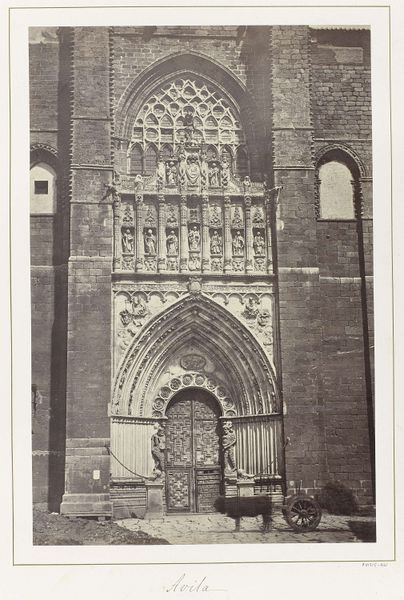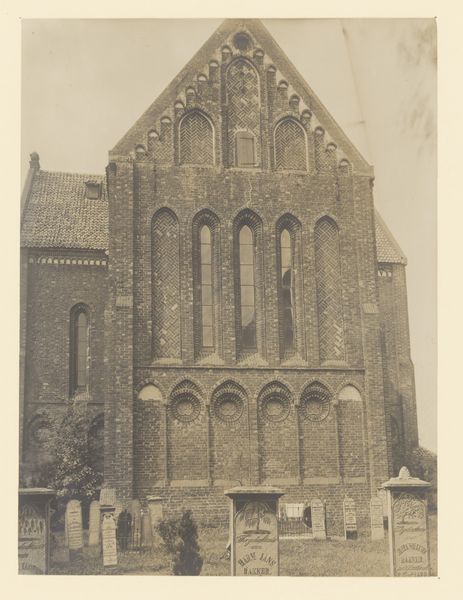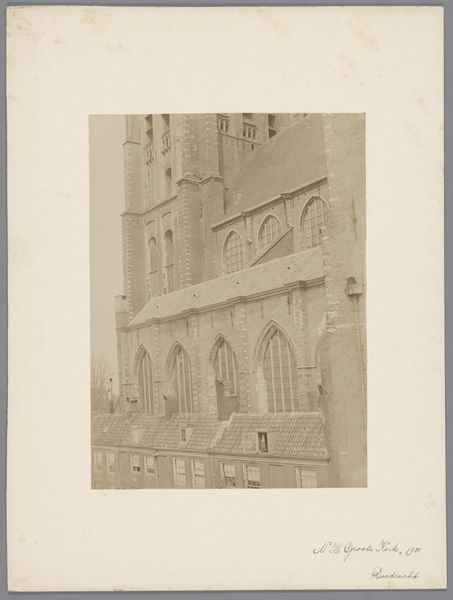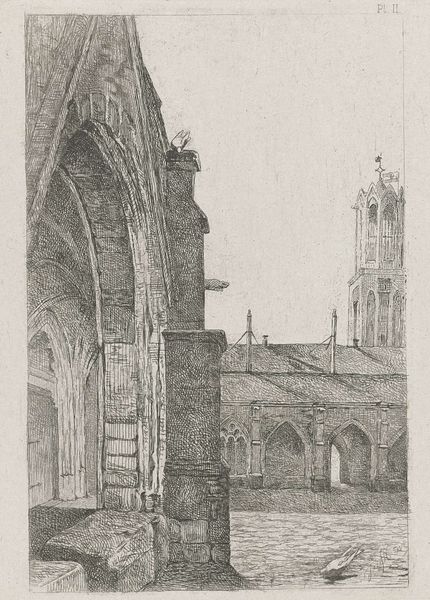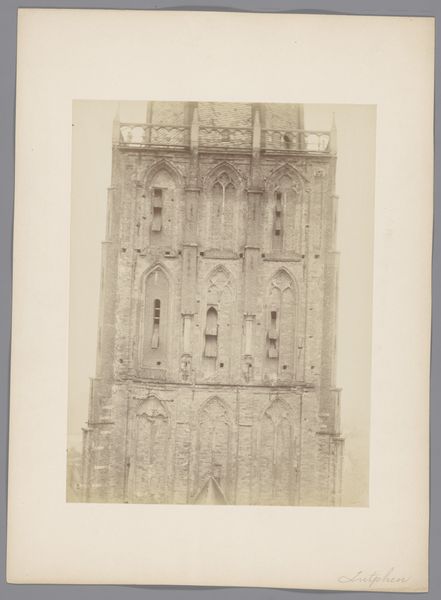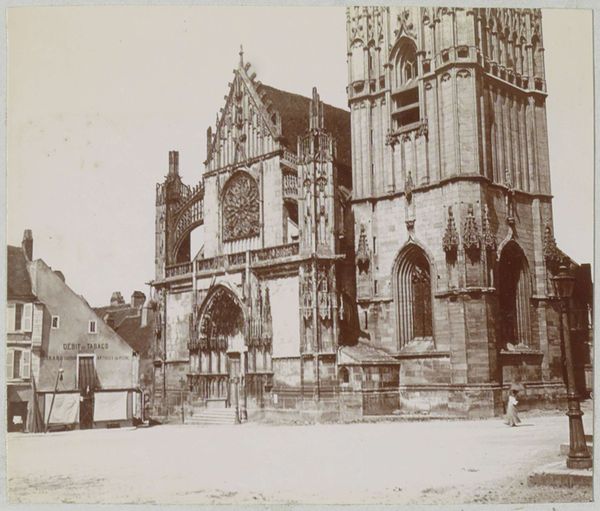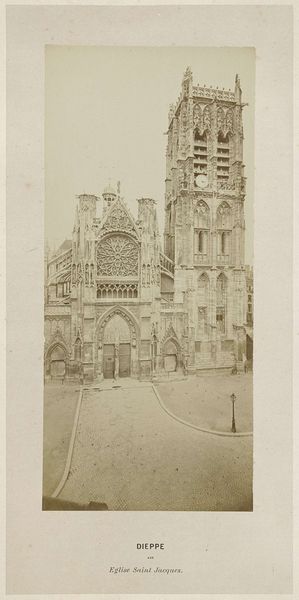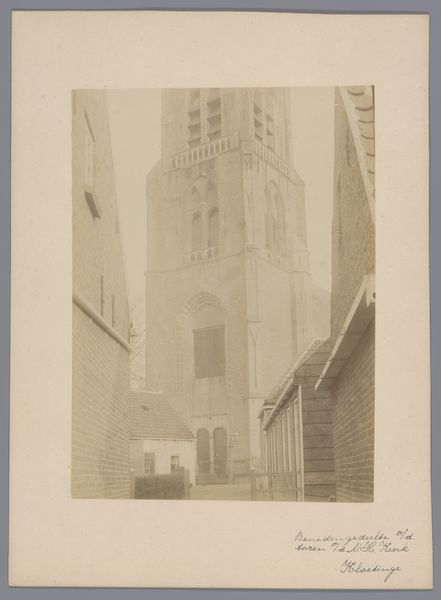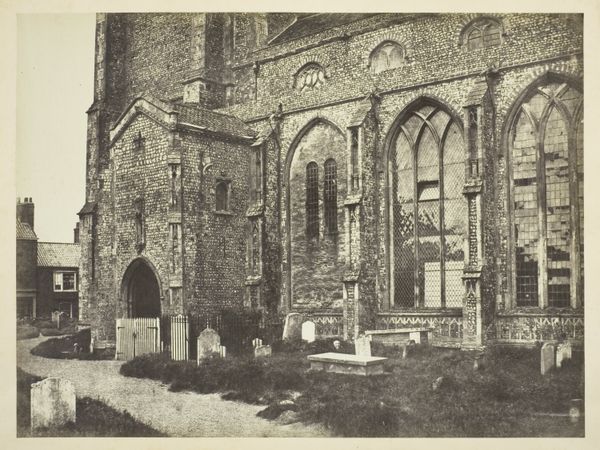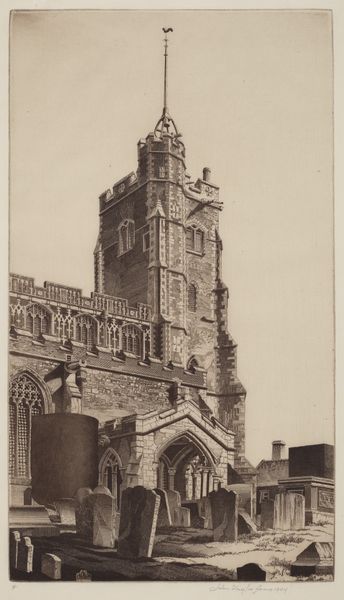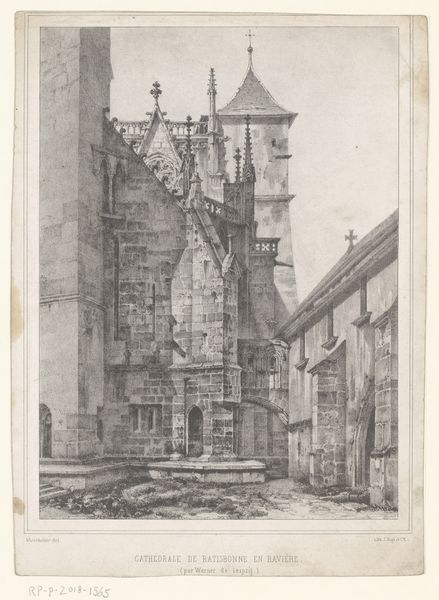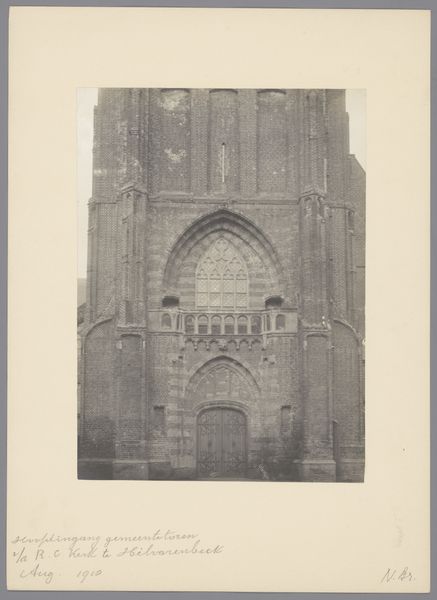
Dimensions: height 226 mm, width 155 mm
Copyright: Rijks Museum: Open Domain
Editor: This is "Side View of Chartres Cathedral," a daguerreotype photograph from 1854 by Charles Nègre. The scale is monumental. It makes me feel really small compared to the architectural achievement. What stands out to you most about this piece? Curator: Well, it's interesting to consider this daguerreotype in the context of 19th-century French society. Photography was a relatively new medium then, still vying for recognition as a legitimate art form. Images of significant architectural monuments like Chartres Cathedral played a key role in this struggle, didn't they? Editor: Absolutely. But why focus on architecture specifically? Curator: Because the gothic style, with its soaring verticality and intricate details, represented a sort of visual manifestation of national pride, a connection to France’s medieval past. Photography was increasingly used as a tool for documentation and the preservation of cultural heritage. The Church had complex relationships with modernity, industrialization, and photographic innovation; how is that seen today? Editor: So Nègre wasn’t just taking a pretty picture; he was participating in a larger cultural and political project? It makes you wonder, how did the public perceive the role of art, particularly photography, in shaping national identity at that time? Curator: Precisely! Images like these helped to solidify the idea of a shared national history and cultural identity. It also prompted interesting class politics given how expensive photography was. The daguerreotype process itself, with its sharp detail, served to highlight the craftsmanship of the cathedral, its age and religious significance. Editor: That gives me a lot to think about. Thanks, I will certainly never look at photography of gothic structures the same. Curator: I found it enlightening too; photography has never existed in a vacuum, with interesting social and political connotations that persist today.
Comments
No comments
Be the first to comment and join the conversation on the ultimate creative platform.
